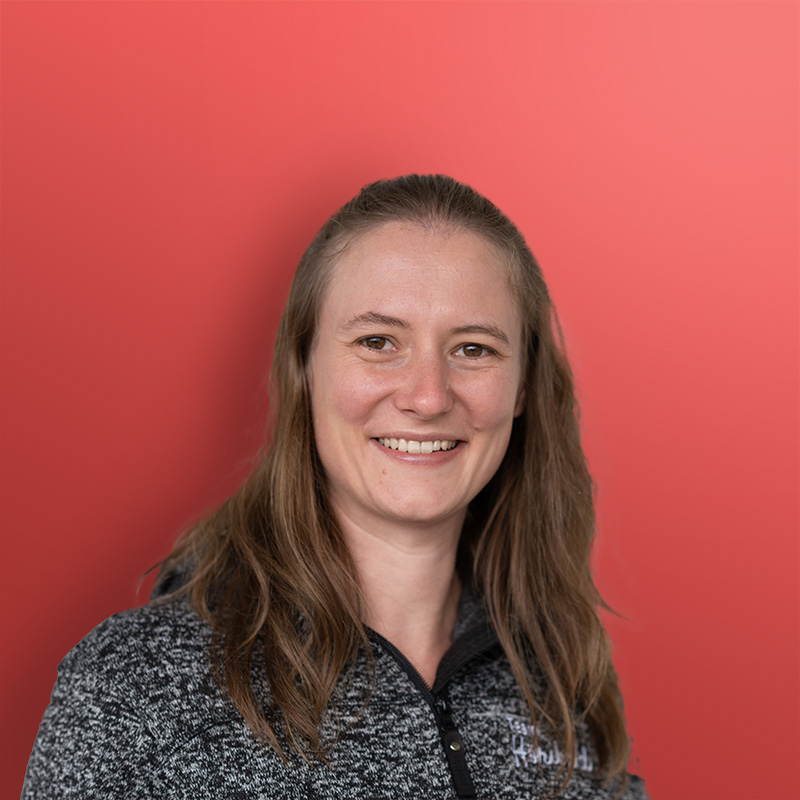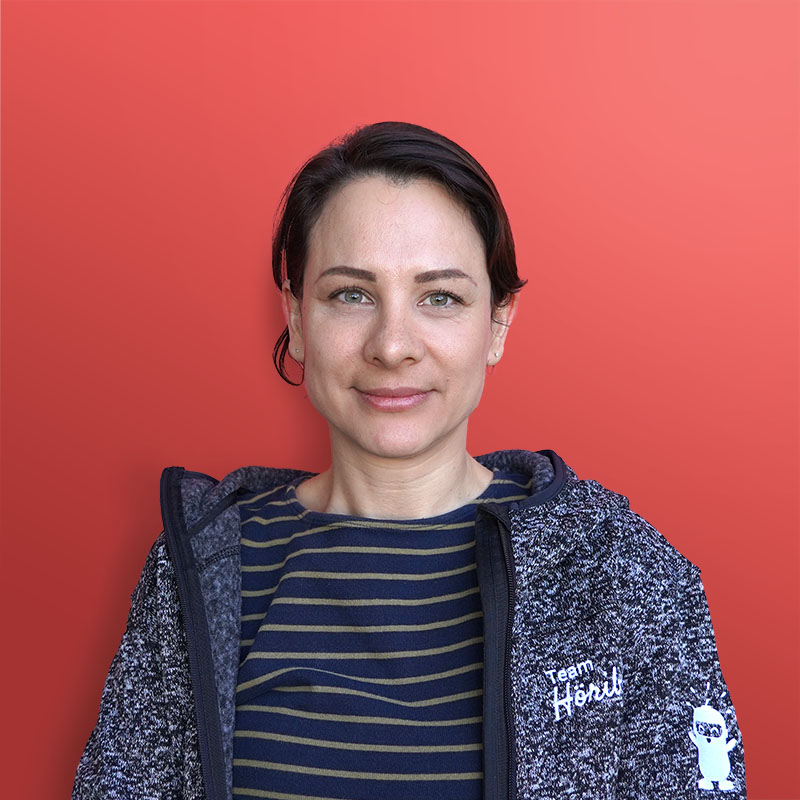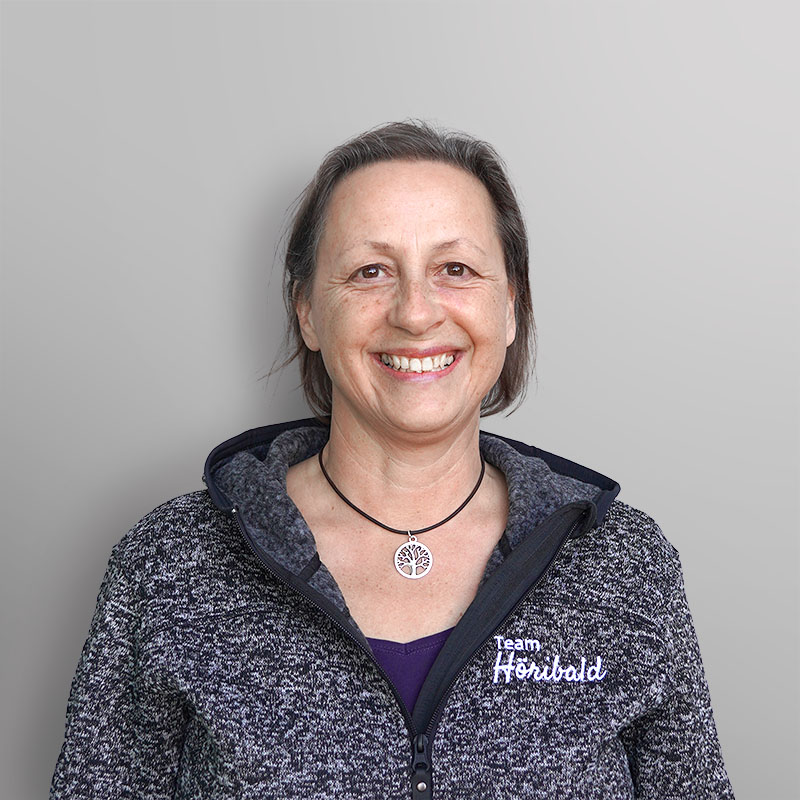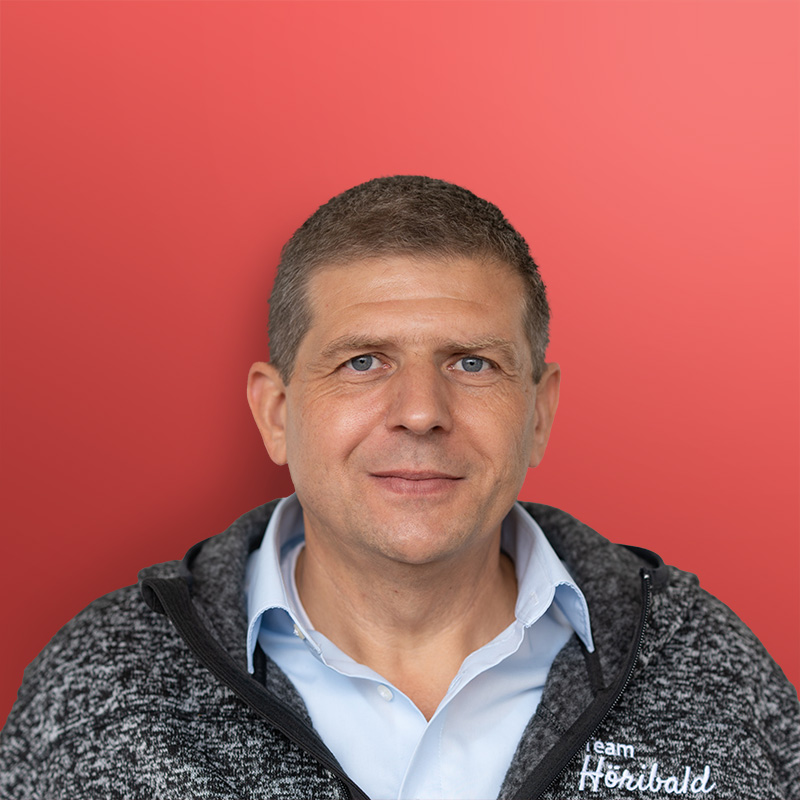.Medicine


.Medicine
Medical Care for Hearing Loss
From the first suspicions, through diagnosis first steps to medical institutions to any eventually required and expedient surgical intervention – you can find useful medical information here that will ensure a fast and secure diagnosis or give you child the best medical support here:
On this page you can find:
The decision for a hearing implant
Initial identification in the first few days of life
![]() Where your baby will be born – a maternity clinic or at home- is left to every couple to decide themselves. However, immediately after birth, the opportunity for important examinations and tests should be taken. One of these examinations is the Newborn Hearing Screening (NGHS) integrated in the mother-child passport. This uncomplicated method, which is gentle to the baby, of testing a newborn’s hearing, gives quick initial information about any abnormalities. Since 2018, in order to be able to identify possible one-sided deafness, this test should of course be carried out on both ears.
Where your baby will be born – a maternity clinic or at home- is left to every couple to decide themselves. However, immediately after birth, the opportunity for important examinations and tests should be taken. One of these examinations is the Newborn Hearing Screening (NGHS) integrated in the mother-child passport. This uncomplicated method, which is gentle to the baby, of testing a newborn’s hearing, gives quick initial information about any abnormalities. Since 2018, in order to be able to identify possible one-sided deafness, this test should of course be carried out on both ears.
Further steps to the expert
The first contact person for parents after discharge from the maternity clinic is the paediatrician. Your baby will be regularly checked, inoculated and supported there for years. If the newborn hearing screening in the maternity clinic showed abnormalities, and you have not been automatically referred to an ENT clinic, the paediatrician is also an important contact with whom you should discuss the issue.
That is because how early a child’s hearing impairment is discovered is crucial for the development of the auditory pathway and thus for the early childhood speech development.
The paediatrician might in some circumstances refer you then to an ENT specialist, who will arrange for other important examinations leading to a final diagnosis.
As the newborn hearing screening only gives a first indication of a possible hearing impairment, further important tests are needed, for example auditory brain stem response (ABR), which can yield very precise information about your child’s hearing status.
Hearing implant systems
If it should transpire that the degree or type of hearing loss your child has excludes provision with a conventional hearing aid, you should consider the possibility if an implanted hearing system for your child. The decades of experience of the implant developers and their satisfied users might make the decision to take this important step easier.
The hearing solutions to treat hearing losses are as varied as the types of those hearing losses. You can get a good insight into the most modern hearing solutions here:
Information on the reliability of MED-EL implant systems here:
https://www.medel.com/hearing-solutions/cochlear-implants/reliability
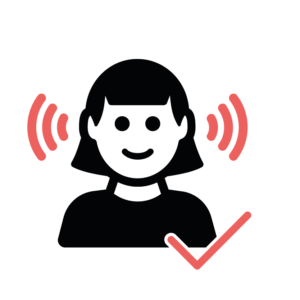 Bilateral hearing provision
Bilateral hearing provision
In the decision for a cochlear implant system you will probably ask the next question: “Should my child be fitted with a hearing implant system on both sides?“
Specialists explain conclusively to us why nature gives us two ears, that it is not a coincidence and what we lose by having only one ear.
Bilateral CI implants or an implant in the deaf ear for babies who are deaf on one side enables localization, equally good hearing and understanding from all directions, giving a balanced and three-dimensional hearing impression and consequently improved understanding of speech in noisy environments. As everything is heard from both sides, your child can also perceive the sound more loudly. This effect brings about “easier” hearing and your child will not tire so easily in everyday life. Apart from that, the central hearing (brain) of both sides is stimulated, and last but not least, the implant on the second side offers a back-up system in case batteries run out or a wire in the audio processor breaks.
All in all, it can be said that bilateral implants offer – as, analogously, does an implant on the deaf side – the possibility for optimal hearing and language development and greater security in everyday situations.
The web site Switch-On-Life shows clearly using hearing simulations the difference you will perceive in specific everyday situations with one or two ears. This is intended to give you as parents a better understanding of his or her hearing situation in the event of your child being deaf on one side, and also give you an interesting insight into the science and technology behind implants.
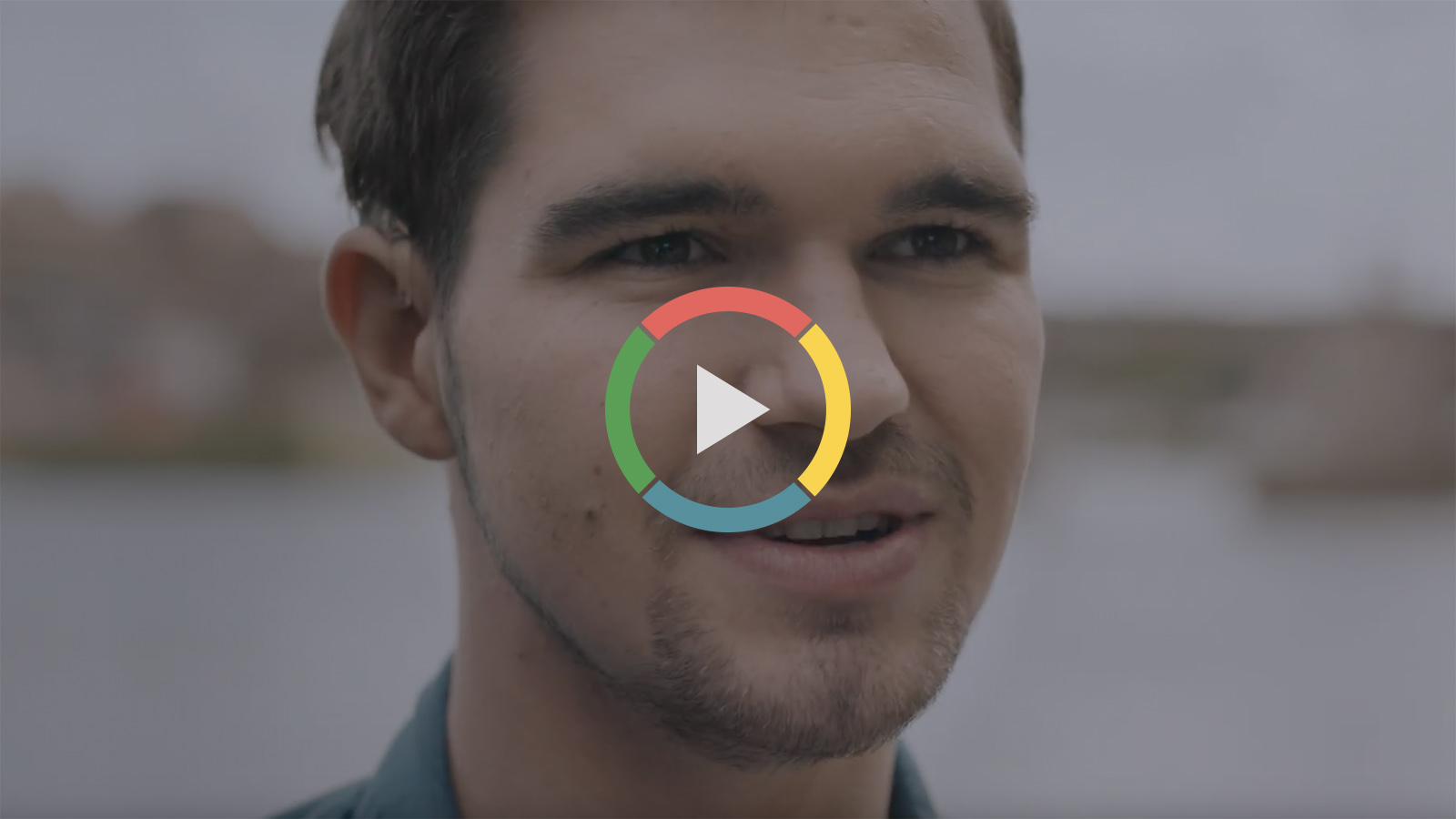
Kontakt zu Experten
The service center ZENTRUM HÖREN in Vienna offers the counseling services for people with hearing loss, advises on the different types of hearing implants and provides long-term care for users after the surgery.
You can find the direct contact to the experts, in order to take further steps and book an appointment for a professional counseling.
About the surgery
Required preliminary examinations
![]() After a consultation meeting and various audiological examinations in your implant clinic, assuming everything indicates a decision to have a cochlear implant, an X-ray or CT scan will follow along with a special check of the function of the auditory nerve, which is a prerequisite for a successful implant.
After a consultation meeting and various audiological examinations in your implant clinic, assuming everything indicates a decision to have a cochlear implant, an X-ray or CT scan will follow along with a special check of the function of the auditory nerve, which is a prerequisite for a successful implant.
If your child is currently of infant age, the operation is ideally planned for around the child’s first birthday due to the general constitution and anatomical considerations.
Actions before the operation
![]() Cochlear implants are carried out across Austria in many ENT-clinics . You get the best therapeutic and surgical care in all of these institutions so you can be confident in choosing a clinic near you.
Cochlear implants are carried out across Austria in many ENT-clinics . You get the best therapeutic and surgical care in all of these institutions so you can be confident in choosing a clinic near you.
A cold might lead to the operation date being postponed. As these dates are most set far in advance, you should protect your child for one to two weeks before, and if possible avoid situations where a cold might be caught.
Please check together with your paediatrician the list of medicines that your child might take regularly. Some medicines might be a problem in respect of an operation due to their ingredients and must be discontinued or adjusted in good time.
A comprehensive internal medical examination is standard before any operation and ensures a complication-free operation and recovery procedure.
In the event that you child has already been fitted on one side with a CI or hearing aid, it is helpful to hand the device to the responsible care staff shortly before the operation, so that you child can hear again immediately after the operation in the recovery room. Usually, the staff in CI clinics are tuned and trained to work together perfectly.
Support person in the hospital
![]() For most parents, it is a given that they do not want to leave their child alone in the hospital in any circumstances. For this reason, one parent or grandparent often stays overnight in the hospital as well. Fortunately, that is usually no problem in Austria’s hospitals. Most public hospitals allow accompanying persons to stay overnight with a child below the age of 18.
For most parents, it is a given that they do not want to leave their child alone in the hospital in any circumstances. For this reason, one parent or grandparent often stays overnight in the hospital as well. Fortunately, that is usually no problem in Austria’s hospitals. Most public hospitals allow accompanying persons to stay overnight with a child below the age of 18.
But whilst accompanying an infant is free, there are fees for accommodation and board for the accompanying person after the infant age. The costs vary from hospital to hospital and from state to state. The daily rates are usually graduated according to the age of the child. Find out in advance from your hospital of choice about any costs or think about taking out a so-called companion cost insurance.
The operation
![]() As a parent you will of course be excited and worried. However, you can be reassured by the decades of experience of the clinicians and technicians. Bu contrast to a tonsillectomy, the intervention is carried out in a relatively harmless area of the skull and has become a routine procedure in ENT surgery.
As a parent you will of course be excited and worried. However, you can be reassured by the decades of experience of the clinicians and technicians. Bu contrast to a tonsillectomy, the intervention is carried out in a relatively harmless area of the skull and has become a routine procedure in ENT surgery.
Generally, the operation is carried out with minimal invasion (small incision directly behind the ear), lasts between one and two hours and requires a hospital stay of only a few days, even if the operation is on both sides simultaneously, which is now usual.
In the implantation, a reception coil is attached to the skull behind the ear and an electrode is fed into the cochlea through a small opening called the oval window.
An intra-operative test by the technician in attendance identifies whether your child responds positively to the first stimulation of the implant.
After the operation
![]() The medical staff in the recovery room look after your child immediately after the operation. To be safe, you should inform them that your child cannot hear at this point, and that will make interaction between the staff and the little patient.
The medical staff in the recovery room look after your child immediately after the operation. To be safe, you should inform them that your child cannot hear at this point, and that will make interaction between the staff and the little patient.
The pain from the wound will not be too great or last for too long as it is now only a small incision. The children also recover much more quickly now as the duration of the anesthetic has been shortened over the decades of development of the operation procedure. Parents can usually stay with their child through the night and be at their side.
In rare cases, there can be a feeling of dizziness, but this usually applies more to older patients. In itself, this is harmless but is possible because the intervention is in the region of the balance organs.
In the course of discharge from the clinic, the medical and care staff will give you some information to take home that must be followed. This includes:
- Regularly taking any medicines required (antibiotics, painkillers etc.)
- The hair may not be washed until the stitched are removed (stitches must remain dry)
- General protection in the first weeks up to initial programming.
Carer’s leave
As your child will need more intensive care around and immediately after the operation than normally, you can normally claim carer’s leave. Basically, you can have one week of carer’s leave for each year of employment – to the extent of your weekly working time. You can take the carer’s leave weekly, daily, or hourly. Moreover, there is a second carer’s leave week within a working year (again to the extent of the weekly working time) if your child is not yet twelve years old.
After all continued remuneration payments from the entitlement within carer’s leave have been exhausted, you can take holiday to care for your sick child under 12 years old without prior agreement with your employer, and this counts as part of your annual holiday. If there is not sufficient holiday entitlement left, you can still take holiday, but this will be unpaid.
First hearing impressions with the implant system
The first fitting takes place at the earliest after the stitches are removed (around ten days after the surgery), but at the latest four weeks after the surgery. In this, the young patient gets the external part of the implant, the “audio processor” which is worn behind the earlobe or as a button processor (a little above). The system can only be activated by doing this. Until this day, the ear is still deaf after the operation. The audio processor is switched on and adjusted. Audio signals can immediately be transmitted to the implant and perceived. A great and unforgettable moment for parents and child!
A world is opened up via the implant that would otherwise have remained closed.
Dominique S., mother of CI user Mariella
Additional Disabilities
On average, a third of all children with a hearing loss have an additional disability. This is because along with a genetic predisposition, the causes of a hearing impairment are often the reason for a further disability. Causes are, for example, premature birth, oxygen deficiency during birth, meningitis, measles, jaundice, vaccination damage, effects of medication etc.
The additional disabilities include, for example, functional faults of the limbs, inner organs, weight problems, cerebral faults, mental limitations, vision impairment or only a specific learning difficulty.
Unfortunately, some of these additional disabilities are not immediately recognized so it is even more important to clarify this straight after the diagnosis of a hearing loss. This sometimes requires additional medical examinations or clarification by a developmental psychologist. Genetic tests can also help to be prepared for further disabilities or to be able to exclude them.
Observe the right of all human beings to choose their own path and surprise themselves.
Hans Jonas, Philosopher
Radiological examinations with hearing implants
![]() If a radiological examination is required for any reason following the fitting of the implant, this is not a cause for concern for users of MED-EL systems.
If a radiological examination is required for any reason following the fitting of the implant, this is not a cause for concern for users of MED-EL systems.
During X-ray imaging, Computer tomography (CT), sonography (ultrasound) or scintigraphy can be carried out without special preparation and with no concerns, you must be aware of the field strength (Tesla) used in magnetic resonance tomography (MRT, MRI). In the clinical range, field strengths of 1.0 or 1.5 Tesla are usual, and recently up to 3.0 Tesla. Machines with higher magnetic force are only used in research.
With the exception of the previously used middle-ear implants VORP 502, all MED-EL hearing implants are MR compatible up to 1.5 Tesla, the SYNCHRONY-implant with the special magnetic assembly even to 3.0 Tesla.
Users of MED-EL implants report an unpleasant sensation in MR only in rare cases, and no serious complications for MED-EL users have yet arisen through MR.
In any MR-examination, the doctor carrying out the examination should be informed about the implant when the appointment is made so that there is enough time before the appointment for any enquiries to be made with the manufacturer of the implant. Detailed and current specifications about the compatibility of its implants with medical procedures is provided by MED-EL on http://www.medel.com/isi/.
Contacts
Kontakt zu Experten
The service center ZENTRUM HÖREN in Vienna offers the counseling services for people with hearing loss, advises on the different types of hearing implants and provides long-term care for users after the surgery.
You can find the direct contact to the experts, in order to take further steps and book an appointment for a professional counseling.
Persönlicher Kontakt zu Betroffenen
Die Möglichkeit, mit anderen Familien und NutzerInnen direkt in Kontakt zu treten, ist gerade am Anfang dieser besonderen Reise mit Ihrem Kind unermesslich wichtig für betroffene Eltern. Hier finden Sie persönliche Kontakte, die sich gerne für unsere Website als BeraterInnen und zum Erfahrungsaustausch zur Verfügung gestellt haben – denn Hören verbindet!

